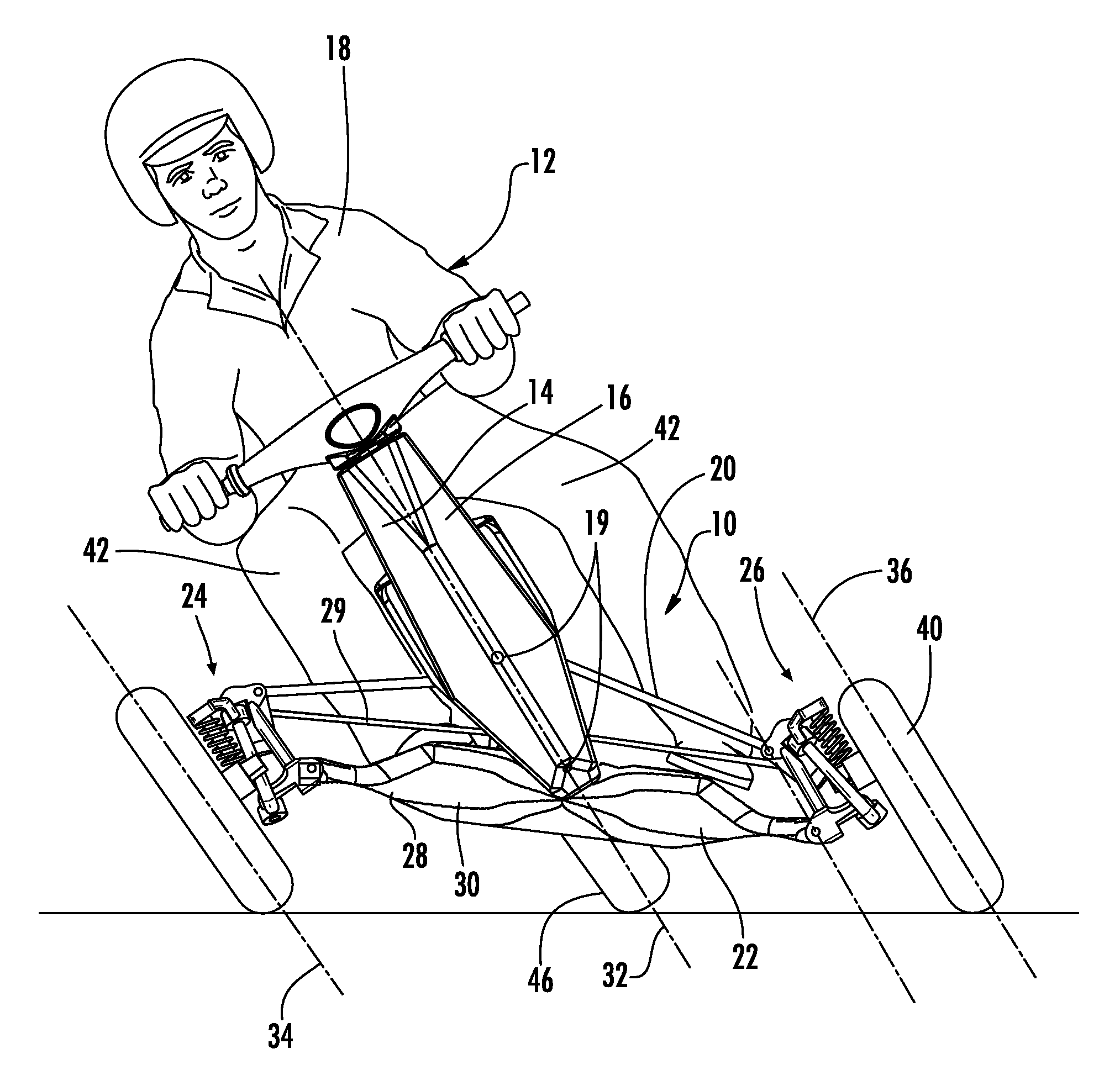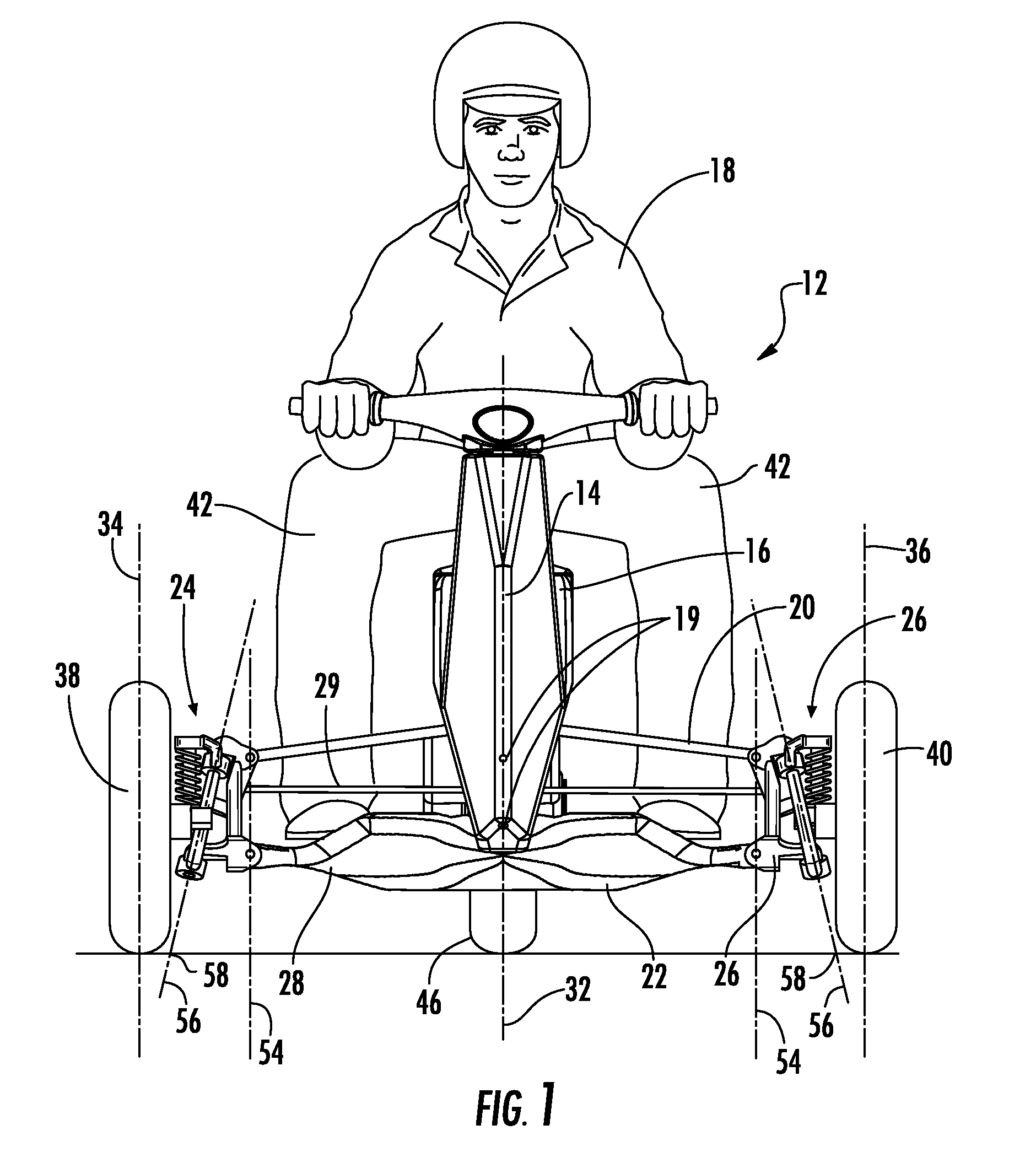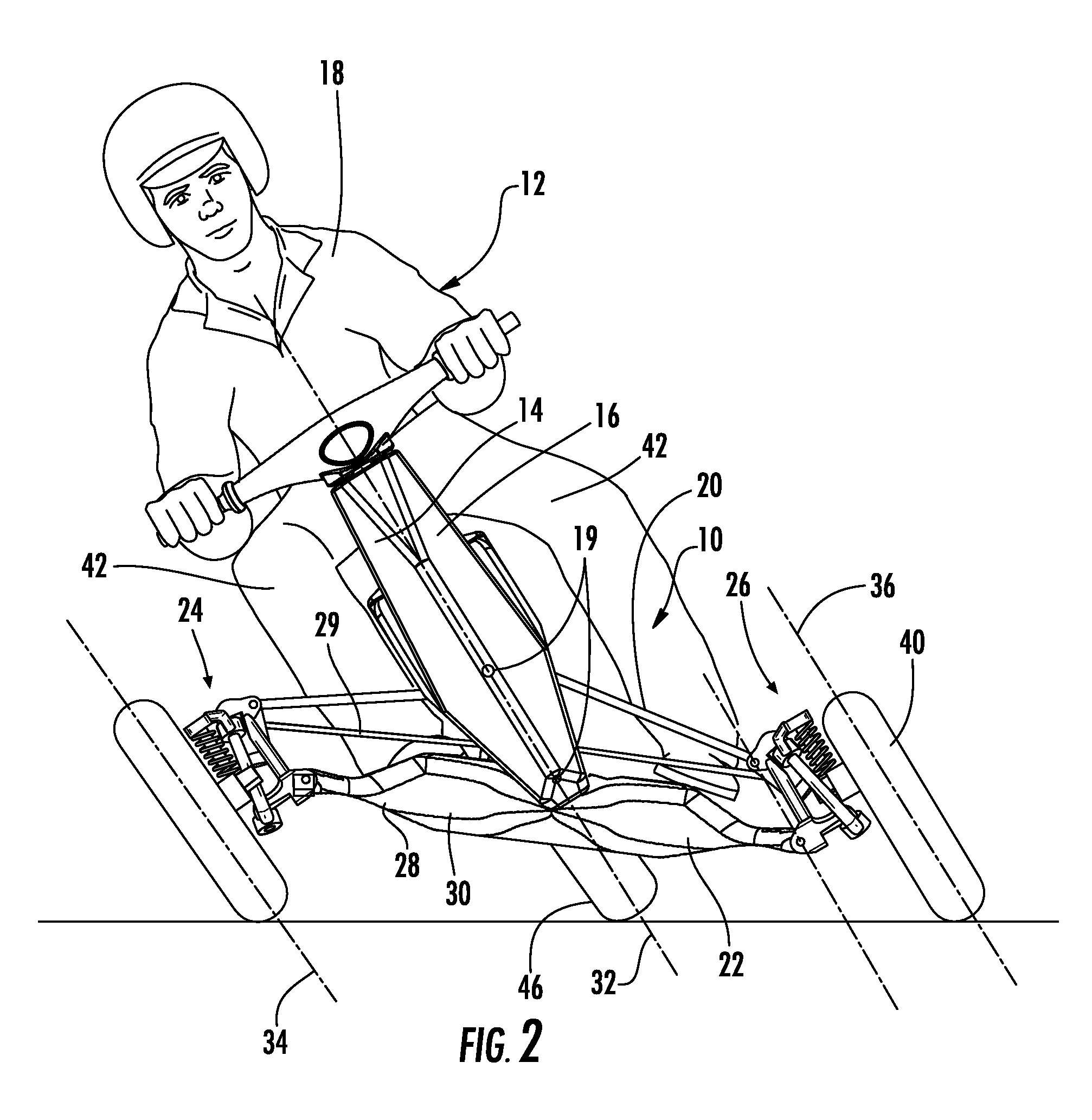Hub assembly for a tilting vehicle suspension
a technology for vehicle suspension and hub assembly, which is applied in the direction of steering linkages, transportation and packaging, and bicycles, etc., can solve the problems of vehicle slipping out of the direction, centrifugal load, and less fuel-efficient than three-wheel motor vehicles, so as to improve the stability of the vehicle, enhance the steering control, and increase the leverage available for tilting
- Summary
- Abstract
- Description
- Claims
- Application Information
AI Technical Summary
Benefits of technology
Problems solved by technology
Method used
Image
Examples
Embodiment Construction
[0020]Now referring to the drawings, the suspension assembly for a tilting vehicle is shown and generally illustrated in the figures. FIGS. 1-2 depict the suspension assembly 10 employing hubs as taught by the present invention and they are installed at the front of a three-wheeled tilting vehicle 12. FIGS. 3-6 depict detailed views of the hubs in accordance with the present invention. Finally, FIG. 7 depicts the improved suspension geometry that is achieved through the hubs and suspension of the present invention.
[0021]As can be seen in FIGS. 1 and 2, the suspension system 10 of the present invention is depicted on a tilting vehicle 12 that is in an upright and a tilted position and is depicted in the context of a wheeled vehicle. In general terms, the suspension assembly 10 of the present invention includes a central frame 14 having a front, a rear and a support means 16 for a rider 18. The suspension assembly 10 can be seen attached to the front of the central frame 14 at pivots ...
PUM
 Login to View More
Login to View More Abstract
Description
Claims
Application Information
 Login to View More
Login to View More - R&D
- Intellectual Property
- Life Sciences
- Materials
- Tech Scout
- Unparalleled Data Quality
- Higher Quality Content
- 60% Fewer Hallucinations
Browse by: Latest US Patents, China's latest patents, Technical Efficacy Thesaurus, Application Domain, Technology Topic, Popular Technical Reports.
© 2025 PatSnap. All rights reserved.Legal|Privacy policy|Modern Slavery Act Transparency Statement|Sitemap|About US| Contact US: help@patsnap.com



